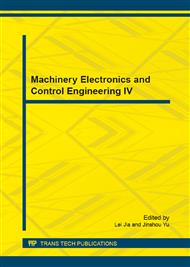p.273
p.278
p.284
p.289
p.295
p.305
p.313
p.320
p.324
Utilization of Energy Storage to Buffer PV Output during Cloud Transients
Abstract:
Consideration of the use of the major types of energy storage is attempted in this paper to mitigate the effects of power transients associated with grid-tied CPV systems due to fast-moving cloud coverage. The approach presented is to buffer intermittency of CPV output power with an energy storage device (used batteries) purchased cheaply from EV owners or battery leasers. When the CPV is connected to the grid with the proper energy storage (54kW), the main goal is to smooth out the intermittent solar power and fluctuant load of the grid with a convenient control strategy. Actual summer 2011 data collected at the Center for Energy Research (CER), UNLV are utilized for the purpose of this study. Hence, appropriate simulations have proven that not only the unit ( Amonix 7700) is capable of putting onto the grid during the day time a constant amount of power (20kW), but also is able to shift the less valuable off-peak electricity to the on-peak time (1pm to 7pm), where the electricity price is much better.
Info:
Periodical:
Pages:
295-304
Citation:
Online since:
December 2014
Authors:
Keywords:
Price:
Сopyright:
© 2015 Trans Tech Publications Ltd. All Rights Reserved
Share:
Citation:


